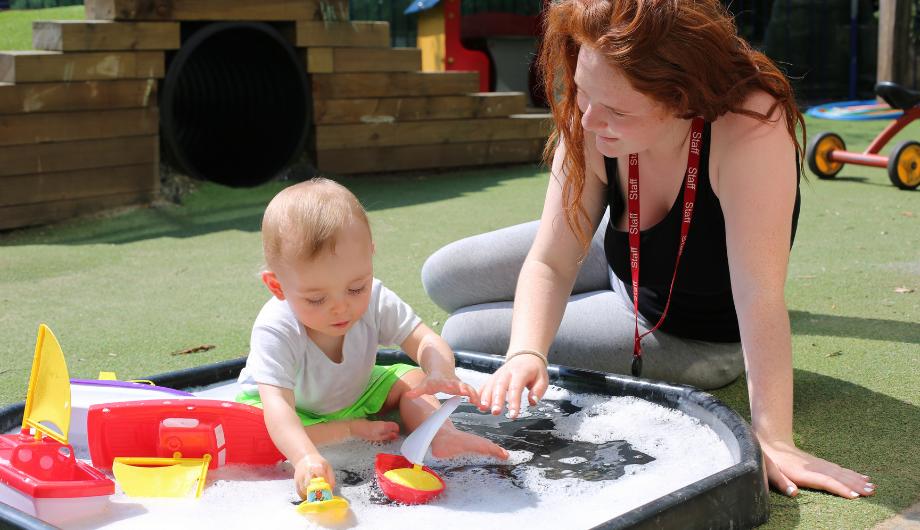
The impact of the mobile phone
It is Good to Talk! The signs of things going wrong in society are usually first evident in small children. The widespread dependence on Smartphones is…
November 30th 2015
For those of you who have just landed after living on Mars for the last few years here is a summary of the 30 hours promise by the Government:
The Budget Summary on 30 Hours:
According to Secretary of State for Education Nicky Morgan and Childcare Minister Sam Gyimah the Government will:
Spend over £6 billion a year supporting parents with their childcare costs from 2019-20. This includes doubling the free childcare entitlement from 15 hours to 30 hours a week for working families with three and four year olds from September 2017, worth up to £5,000 per child.
The new average funding rate or free childcare for 3 and 4 year olds will be £4.88 including the EYPP, and for free 2 year old childcare will be £5.39. Read the report commissioned by the Department for Education which presents their rationale. Just note that the research was based on a study of 57 nurseries out of 34,000 which meant it was a sample group of 0.02% with no input from the membership bodies such as PSLA or NDNA and with a rather limited geographical spread.
The Government has also agreed a review of the cost of childcare provision in 2016 and agree a National Early Years Funding Formula and other reforms, to ensure funding is fairly allocated.
Tax-Free Childcare for under-12’s will be introduced from early 2017, providing up to £2,000 a year per child to help working parents with their childcare costs. This means that, starting from 2017, a family with two children can begin to claim childcare support worth up to £40,000 through free hours and Tax-Free Childcare by the time both children are at school. The Autumn Statement and Spending Review set an upper income limit per parent of £100,000.
Eligible parents for the free 30 hours need to be working the equivalent of 16 hours per week per parent at the national minimum wage.
******What does this mean though? ******
The new funding rate is £4.88 including the EYPP, and funding per place for two year olds from a flat rate of £5.09 to £5.39 an hour. It builds in the 53p an hour EYPP. However, a colleague contacted me to say that he spoke to Nursery World who went back to the DfE to confirm and I quote, ‘that it isn’t ‘valid’ to deduct the 53p of EYPP to give a net of £4.35; for example if only 2% of children get EYPP, then this becomes ((100*4.88) – (2*0.53))/100 = £4.87 for every other 3-4 year old – or £4.83 if 10% of children had EYPP. NW will explain in print next week]’
There is currently no mention of regional variations (obviously I am concerned because London is expensive and if you don’t believe me read the report from Loughborough University which shows the childcare in the Capital can cost 50% more than anywhere else. And it gets even more costly the longer parents work and so cancels out the benefit of more hours at work.)
If by adding the EYPP into the flat rate can we assume that it is being distributed to all children receiving the free offer and not available for additional support? What does that mean for those targeted children?
The average rate of £4.88 does not take into account how much will be top-sliced (average is over 7% retained for Early Years teams etc with some LA’s retaining significantly more) before it reaches us. So don’t assume you will get £4.88.
The research analysis baffled me by suggesting that nurseries had an average surplus in funding of £0.22 when settings’ unit costs for providing three- and four-year-olds childcare were compared with local authority funding rates; for childcare for three- and four-year-olds 34% experienced a shortfall in funding, while 66% had a surplus. This completely contradicts the findings of the PSLA and NDNA who have repeatedly told the DfE we get paid “4 days pay for 5 days care” i.e. a 20% deficit.
The rate does not have a profit or margin built in which is a worry as most use their profit to improve the children’s learning environment and upskill staff; both of which contribute to quality.
The National Living Wage has not been costed in; a worry given that the largest single factor contributing to settings’ total costs is ‘staffing costs’, which account for 73% of total costs. The introduction of the Living Wage, the additional on-costs and defining the promotion gaps between level 2 and 3 and upwards may scupper many a business or mean we have to increase the fees to parents.
The View from the Sector
Amid the glitz of the Nursery Management Awards Dinner last night (where we won the ‘Training and Development Award’ and the ‘Group of the Year Award’)
There were many calm and logical conversations about the Government announcement. No one was fooled by the average rate and how that would translate. The concerns were similar among the wider sector (private or voluntary) on how we would offer 30 hours, it at all. Sustainability is already uncomfortably stretched and would be further challenged by:
1. Inability to sell additional childcare hours above the free entitlement was important especially as some, like LEYF, subsidise the free entitlement through cross-subsidy.
2. Additional hours may limit settings providing other services that helped them break even.
3. The Government wants more places but the sector is struggling to recruit suitably qualified or experienced staff. We are still trying to get over the EYE and GCSE A to C debacle with Colleges operating a significant shortfall in recruiting students.
4. Real concern about the ability to support children with additional needs without adequate additional funding especially as Children Centres are closing and with them access to support services.
5. Some settings may limit the amount of two-year-old funded early education they provide because of additional costs incurred through providing unfunded additional support for children and families.
The feeling summed up in the recent article in CYPN on ratios really upset most people. The DfE seems somewhat aggrieved about how we use the ratios and appear to think we are inefficient because we don’t allocate our staff more efficiently so we can flex the ratios.
I quote, ‘Findings from the DfE childcare consultation showed some nurseries do not make proper use of the staff-to-child ratios, and are using more staff than government regulations require. ….By working closer to the ratios and having fewer members of staff per child, settings can improve on quality and decrease their costs by around 15 per cent, it concludes.’
Our Minister is keen to push 30 hours as a parent panacea. Interestingly he may not make them happy if he amends the ratios. I remember LEYF parents being horrified at the suggestion in 2013. CYPN referred to, DfE research in 2013 which found that more than half of parents think ratios where a teacher is present is too high. ‘The DfE’s report acknowledges that providers works to higher than minimum ratios as a ‘quality measure’, while its own research shows that the majority of parents disagree with the current 1:13 minimum ratio for teacher-led settings. Given this, it’s unclear why government is continuing to push on this point.’
The Government seems to think the sector is against it but this is just not true. We are neither scaremongers nor doom-mongers. We are realistic business people who know the costs of running sustainable and supportive nurseries. This means balancing the books while giving children and their families the best possible service . Nurseries could be the strongest strand in the Government’s early intervention strategy if only they would collaborate on a more equal basis with the sector. In fact, on a wider scale, the Childcare Minister could provide a welcome hand to the Home Office and the Security Services by enriching the strong social capital built by so many nurseries.
The task for the Sector is to decide whether each nursery will deliver 30 free hours and in so doing create a clear response for parents so they understand what the 30 hours really means for their children, themselves and their employers.
It is time for a ‘Big Childcare Conversation?‘

It is Good to Talk! The signs of things going wrong in society are usually first evident in small children. The widespread dependence on Smartphones is…

Talking Early Years – In Conversation with Dr Ger Graus The power of play is recognised within the Early Years sector as essential to children’s development. Playing is…

How Early Years staff can help children cope with imprisonment of a loved one In my life many of my connections have been made through serendipity. In this case…